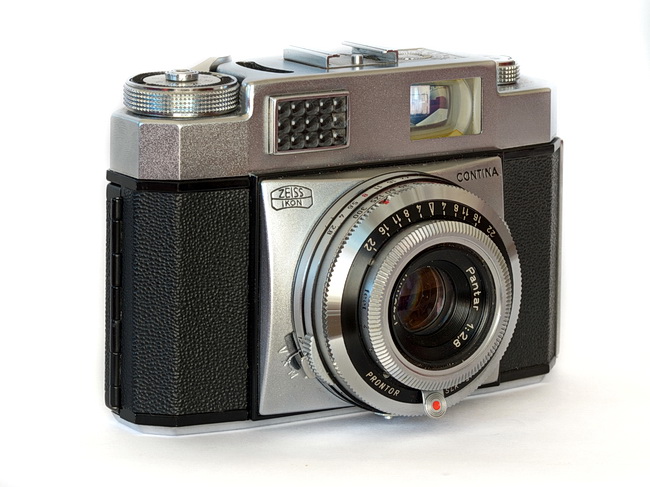
Some cameras are enjoyable for reasons that have little to do with the quality of the images they produce. Sentimentality is a great randomizer. Chances are, no matter what specific model it was, you remember your first camera fondly. I’m no different. And that’s why the Zeiss Ikon Continamatic is a favourite. It was my first love.
A Continamatic was given to me by a favourite uncle and became the first camera that was mine and mine alone. It was also the first camera I’d ever seen with a self timer. When I was a kid, I thought it was magical that some how my uncle could be in the picture with us. I was quite taken with that. So, many years later when he offered the camera to me, I was pretty excited to have it. And for the first time I started taking photos of things that simply caught my eye.
So what exactly is a Continamatic? It’s a zone-focus 35mm camera with a coupled, match-needle selenium-cell light meter. Turning a knurled ring for a given meter reading yields a range of shutter speed and aperture combinations that produce the same exposure. That’s the concession to automatic operation that gives the Contina its “matic” suffix. Focus is strictly by guestimation, however, and as a beginning photographer this was what gave me the greatest difficulty. Generally, the shots that didn’t turn out on my first few rolls were simply poorly focused. Then, as now, I was crap at estimating distances.
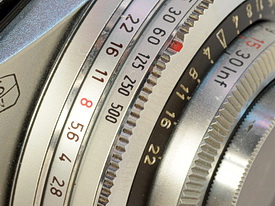
Exposure combinations are selected by rotating a ring. In this example, the camera is set for 1/60 second at f/22. Unusually, this particular Continamatic's shutter speed goes up to 1/500 second.
Zeiss Ikon made a number of Contina cameras, but apparently, this particular model was only made in 1959 and 1960. The camera’s standard lens is a 45mm f/2.8 Pantar (whatever that is), which is purported to be a 3-element design. But with the Continamatic III (the model I have), you could change out the front element and swap it with a 75mm or 30mm lens. Both these auxiliary lenses are quite large and heavy so most of the time I stick with the standard lens.
Interestingly, the camera I got from my uncle has an extra shutter speed and different sequence from the other two samples I have in my collection. All three have the same “Prontor SLK Spezial” mechanism, but my uncle’s camera has top speeds of 1/125, 1/250, and 1/500, whereas the other two cameras only have 1/125 and 1/300 at the top end. This second sequence seems to be much more common. I have also noticed some minor differences in the construction of the shutters. My uncle’s camera has an internal eccentric screw which appears to move the body lens elements by a very small amount — probably for fine-tuning infinity focus. The other two samples I’ve had apart lack this feature. I’ve also noticed some different materials used the shutters. Curious that there’d be variations like this in a model that was in production for only two years.
Apart from sentimentality, the Continamatic does have several things going for it. The exposure system is quick and easy to use and the image quality is very good. The camera also has a solidity about it that I find pleasurable. But perhaps its nicest feature is a big, clear and bright viewfinder. I’ve seen few that were as enjoyable to look through. It has frame lines for both the 45mm and 75mm lenses. And as a rough approximation, the edge of the viewfinder field is equivalent to the field of the 30mm lens. The converter lenses appear to be of reasonable quality, though in truth, I’ve used them so infrequently that I don’t have a lot of images with which to judge.
The camera is very much a product of its time and place of manufacture. It’s a heavy (650 grams, with 45mm lens) hunk of metal. But is it rugged? That’s harder to assess. All three of the Continamatics I own required some amount of servicing to get into good working order. Does that indicate fragility, or simply the result of being 50+ years old? Hard to say.
Would I recommend one? The Continamatic is a nice picture taker, but I don’t think I’d advise you to buy one sight unseen. (Sorry eBay!) And if the camera you’re looking at doesn’t include the auxiliary lenses, you might consider the otherwise identical Continamatic II, which has a fixed, 45mm f/2.8 Pantar lens. Of course, if you’re driven by memories of your first camera, you will likely find yourself going down a different road altogether. As I said, sentimentality is a great randomizer.
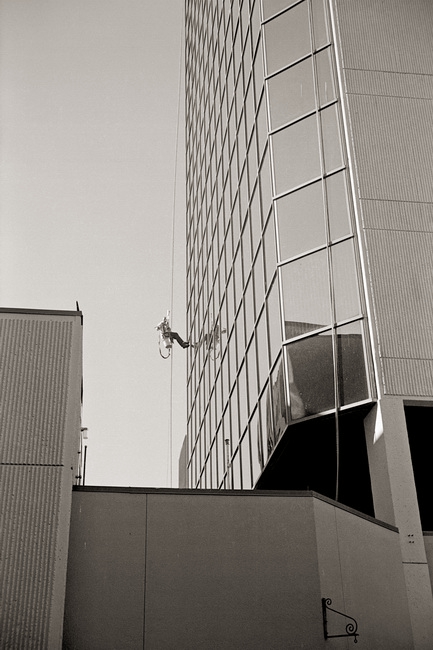
Window washer, off Fort Street, Victoria, B.C. (Camera: Zeiss Ikon Continamatic; Film: Ilford XP2 Super 400)
Click here to see more Continamatic samples.
(Did you find this article interesting or helpful? If so, consider using this link the next time you shop at Amazon.com. Better yet, bookmark it for future use. Thanks to Amazon’s associates program, doing so costs you nothing yet helps keep this site up and running. Thanks!)

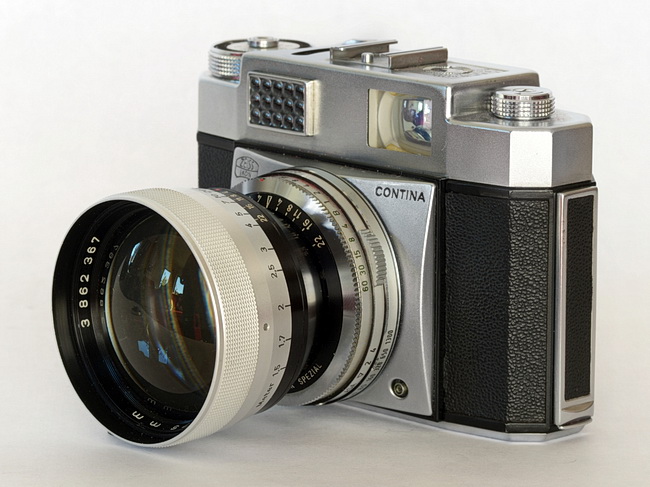
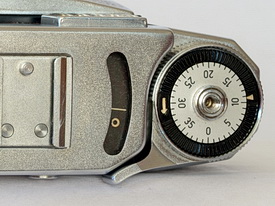
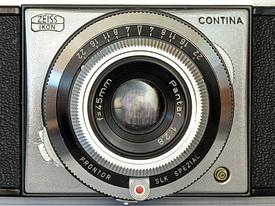

 Subscribe with RSS
Subscribe with RSS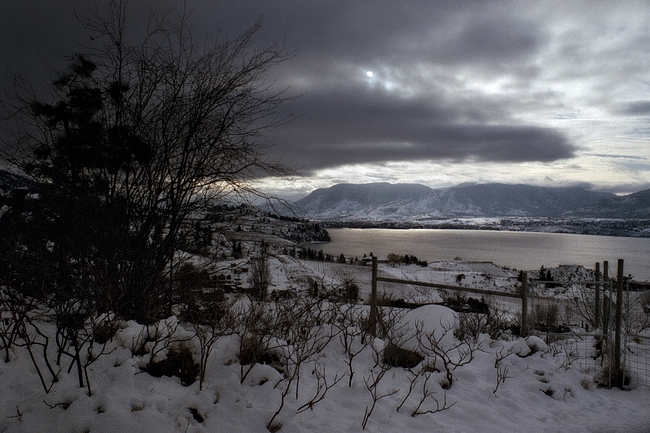
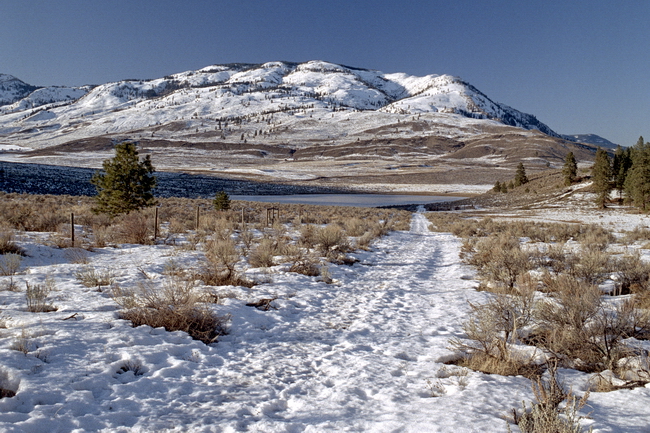
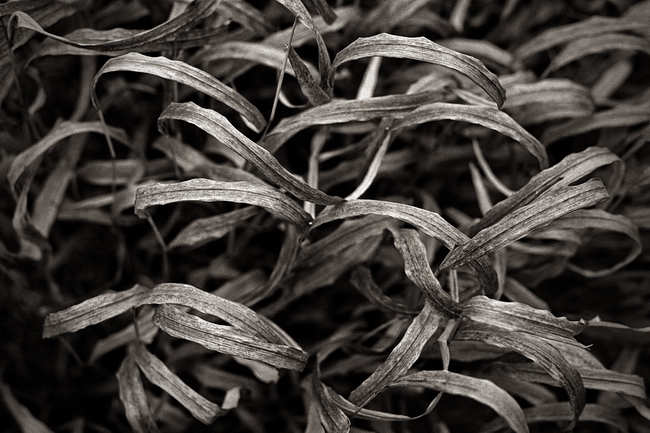


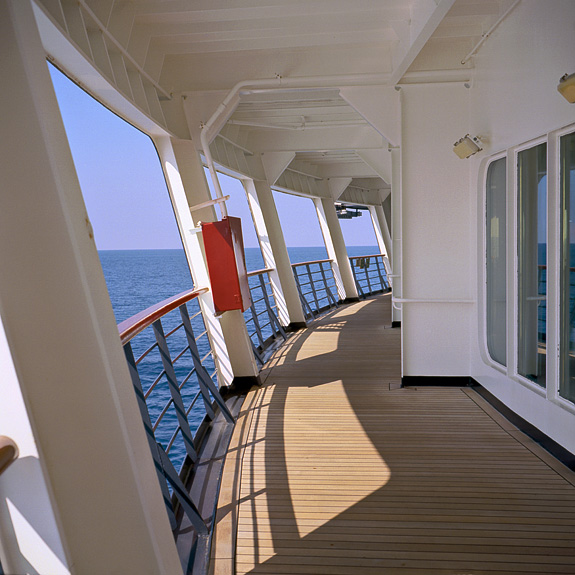
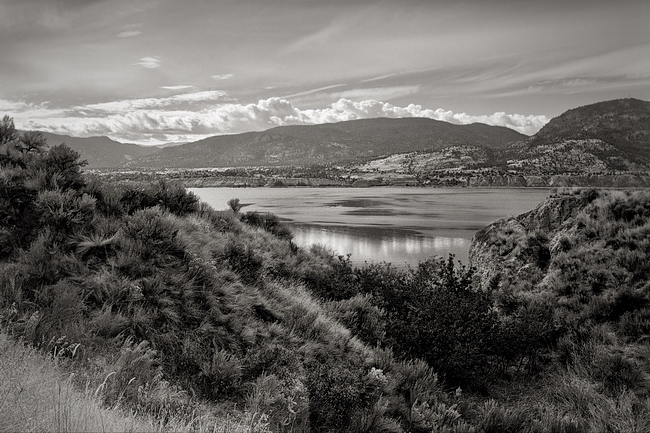
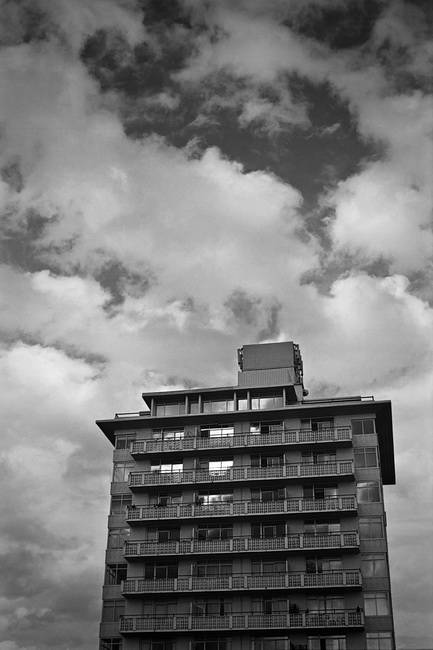
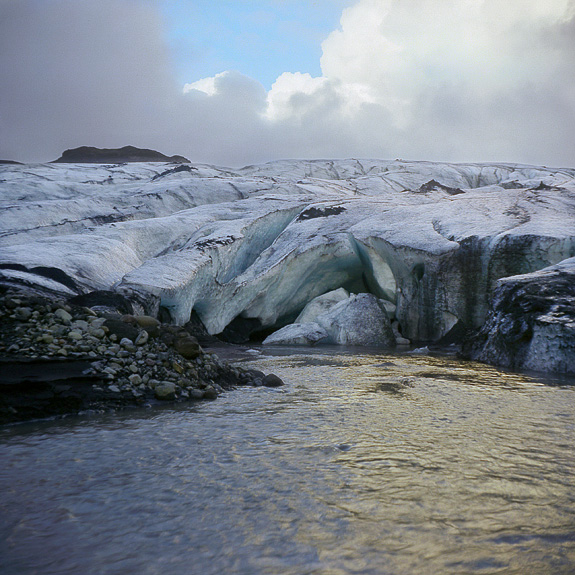

HI! great article. I stumble into a contina iia, bought it for cheap. Its in really great shape, I am going through my first role test role. I notice you took a photo in victoria bc, I live in victoria. anyways, great article really informative for us the novice. I look forward to my photos, just a couple of more shots to go. where do you develop your film?
In my bathroom. It’s fast, easy and convenient. Lens&Shutter on Broad Street still do colour in-house at a reasonable price though.
Gary
Hi Gary. Robert in Bradbury NSW here. The Continamatic 111 was my first camera at age 15 – lost it, a Contaflex and a Jenaflex in a robbery in ’90. Know anywhere I could get a reliable working copy of any of the above? I shoot Canon digital these days but the old film bug still bites occasionally . The Contina went everywhere with me including the Calgary winter games in ’88. Having been “trained” on the Contina my usual mode of operation is aperture priority – funny about that. Lovely article and pics on the Contina.
Regards
Robert Davis.
Hi Gary. Robert again. Put wrong email on the last comments. Please use th one below. Any others wish to reply use the address below as well. Thanks all.